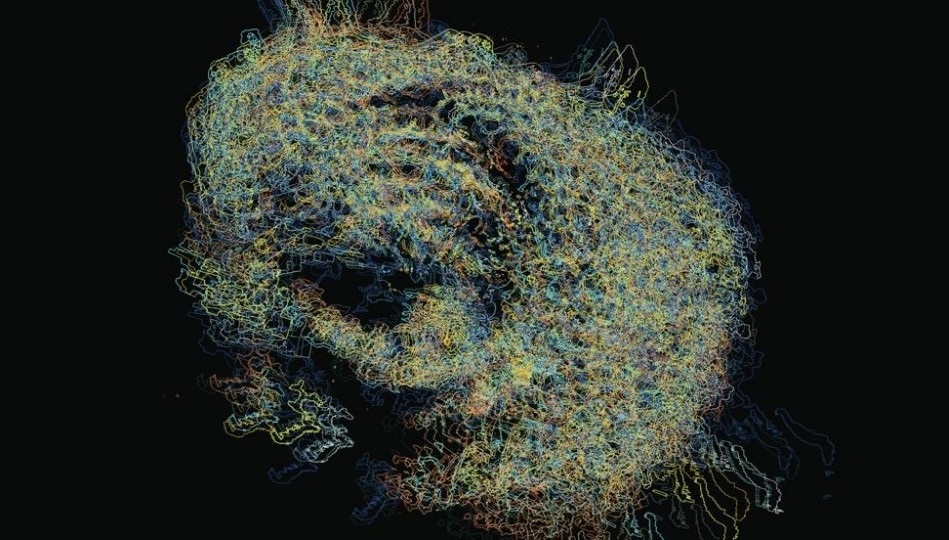Despite their importance in education and society, science and art are often seen as distinct fields, which, in my opinion, stifles beneficial connections. I want to foster these connections by helping to make sense of scientists’ work for a wider audience through my own work as an artist. I have seen the enormous potential that exists when scientists and artists work together.
Like advanced imaging specialists, I am fascinated by light, colour, lasers, technology and science. When I discovered the Wellcome Trust’s Sci-Art scheme in 1998, its ethos – to foster connections that produce art directly inspired by science – encouraged me to seek out life scientists to collaborate with, because the methods we employ to create images are connected.
Advanced imaging specialists and myself both have knowledge of light, optics and computer visualisation methods, while I am fascinated by how I can use scientific image data innovatively. There has always been a lack of understanding between art and science in terms of approaches to imaging and its potential. I wanted to discover if and how an artist-researcher could contribute to new methods and approaches through collaboration.
My aim was to dismantle silo mentalities so that artists can work with scientists to create new representations, insights and behavioural change. I wanted to use experimentation and play – elements that helped me negotiate and interpret our collaboration in new ways by extending artistic and scientific methods of visualisation. This led to new and different representations, technological advancements and better intellectual and visualisation skills.
I advanced three methods of production: an introspective, digital drawing method using limited tools; data montages where data and documentary footage are explored; and experimental moving image work, integrating documentary film footage and sound.
Getting in on the science
Advanced microscopy is used to observe cells that the naked eye cannot see, while being as gentle as possible on the object being examined. My work focuses on the imaging potential of the biomedical data revealed through advanced microscopy. This artistic expression of scientists’ data can provide them with tools for showing their work in a different way to a different audience.
For example, I work with scientists while they conduct image experiments, to discover how and why they generate image data of cell behaviour. In a nutshell, my research seeks to break down barriers and boost collaboration so that artists and scientists can see the other’s work from a different perspective.
However, these scientists devote their lives to medical research and have little opportunity to interact with colleagues from other disciplines. But my presence as an artist helps to bridge this gap and supply fresh insights that alter the way I, and everyone around me, see scientific images.
My observations spark new depictions of cells, biological structures and skin, (see images above and below). For example, I use digital sketching to map the structural complexity of biological structures such as radiolaria – minuscule single-cell marine creatures with a delicate mineral skeleton made of silica.
Inspired by watching these scientists at work I create data montages, seeing unique patterns, wonderful colours and movement through layers of skin at this detailed magnified size (as seen below). I then display my artwork along with advanced microscopy photographs at scientific conferences to compare results and highlight the aesthetic potential of scientific data from an artist’s perspective.
Continues at…

Read the full article, written by Joanne Berry-Frith, a Lecturer in Graphic Design and Illustration.
